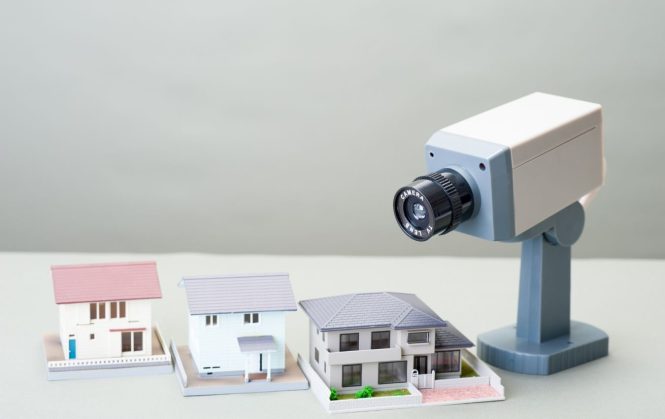

DIY home security code help is crucial in today’s world for protecting your home. A strong home security system acts as a deterrent against intruders, and taking a DIY approach can save you money while enhancing your security. This guide explores essential DIY strategies for boosting your home security through various practical steps, covering everything from smart technologies to straightforward preventative measures. We’ll address common security concerns, offer effective solutions, and provide a clear roadmap for implementing these strategies. This article is structured to first outline the fundamental concepts of DIY home security and then move on to detailed strategies for improving your home’s security, covering specific areas like lighting, alarm systems, and smart home integrations. Prepare to fortify your home against potential threats with actionable steps!
Understanding Your Security Needs
Identifying Vulnerabilities
The first step in any DIY home security project is a thorough assessment of your home’s current vulnerabilities. Consider factors such as easily accessible entry points, lack of exterior lighting, or inadequate interior visibility. A well-lit home can deter potential intruders. Analyze your property’s exterior and interior layouts to identify areas susceptible to unauthorized entry. Note the presence or absence of security measures in these areas. Assess potential risks by considering your neighborhood’s crime rate and local security trends. This will help you prioritize your security investments and tailor your strategy accordingly.
Setting a Budget and Timeline
Establishing a realistic budget and timeline for your DIY home security project is crucial. Research costs for various security measures such as alarms, cameras, and lighting upgrades. Create a detailed cost breakdown to understand the total expense and potential savings. Determine a feasible timeline for each project phase based on your available time and resources. Plan achievable steps so you can effectively implement security improvements without undue stress.
Choosing the Right Security System
Smart Home Integrations
Smart home technologies offer advanced security features that can enhance your existing security setup. Home security systems increasingly integrate with smart devices, providing comprehensive monitoring and control. Investigate compatible smart devices that offer seamless integration with your chosen system. Smart doorbells and video door cameras provide real-time visual feedback. Consider installing smart lighting systems to create the impression of occupancy when you’re away. Smart locks offer added convenience and security with remote access and enhanced authentication. Look for security systems that are compatible with your existing smart home ecosystem.
DIY Alarm Systems
DIY alarm systems offer a cost-effective solution for basic security enhancements. Install inexpensive motion detectors and window/door sensors to trigger alarms when triggered. Ensure the alarm is clearly visible and readily accessible. Consider investing in a professionally installed alarm system for enhanced protection. There are many DIY kits available to help you customize security measures.
Enhancing Exterior Security
Strategic Lighting Placement
Strategic lighting plays a vital role in deterring potential intruders. Well-lit pathways and entrances deter criminal activity. Use motion-activated lights to deter potential burglars by illuminating areas of your home. Install strategically placed lights around the perimeter of your home to create a sense of security. Choose energy-efficient LED lights to reduce energy consumption and maintenance costs.
Fortifying Entry Points
Consider fortifying entry points such as doors and windows to increase security measures. Reinforce doors with strong locks and security hardware. Install reinforced door frames to deter forcing and enhance structural integrity. Ensure that windows are equipped with secure locks to enhance security.
Securing Interior Spaces
Monitoring Interior Spaces
Monitoring interior spaces is crucial to safeguard your belongings and detect potential threats early. Install motion detectors and cameras to monitor key areas. Implement motion-activated lighting to create the impression of occupancy and dissuade intruders. Consider installing security cameras in strategic locations to monitor areas such as hallways, staircases, and entry points.
Implementing Security Measures
Install security cameras and sensors to monitor interior spaces and deter intruders. Use motion detectors to activate lighting or alarm systems for added security. Use strong locks to secure doors and windows. Ensure all doors and windows have reinforced locks to deter intruders.
Addressing Specific Security Concerns
Protecting Valuables
Secure valuable items with locks or safes to deter theft. Use motion detectors to alert you to any movement. Store valuables in secure areas that are monitored by security cameras or alarm systems. Implement a home security system tailored to your budget to adequately protect valuable items.
Creating a Sense of Occupancy
Leaving lights on timers or using smart lighting systems can create the impression that someone is home. Use automated devices to activate lights and sounds periodically. Strategically place mirrors in key areas to maximize visual coverage. Consider using motion sensors with a timed automated light system to provide maximum security and comfort.
In conclusion, DIY home security code help can significantly enhance your home’s protection and peace of mind. By understanding the basics of security systems, employing smart technologies, and taking proactive steps, you can effectively deter intruders and create a safer environment. Remember to prioritize security measures that align with your budget and security needs. For personalized guidance, consult with a professional security consultant or explore online resources for further information. Ready to upgrade your home security? Start your DIY journey today!